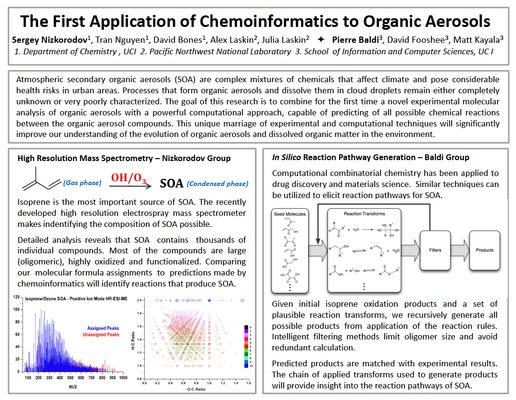The First Application of Chemoinformatics to Organic Aerosols
Atmospheric organic aerosols are complex mixtures of chemicals produced by incomplete atmospheric oxidation of anthropogenic and biogenic volatile organic compounds (VOC). Organic aerosols affect climate on both global and local scales and pose significant health risk in the urban environment. Atmospheric chemists understand the initial steps of VOC oxidation reasonably well. However, the processes taking place after the first-generation products of VOC oxidation condense in organic aerosols, and after the organic aerosols dissolve in fog and cloud droplets, remain poorly characterized. The goal of this research is to combine a novel experimental approach pioneered by the Nizkorodov group, capable of detailed molecular characterization of organic aerosols and simultaneously observation of thousands of organic aerosol constituents, with a powerful computational approach recently developed by the Baldi group, capable of computer-aided prediction of all possible chemical reactions between the organic aerosol compounds. This combined approach will help identify different classes of organic compounds present in aerosols and clouds and elucidate the underlying formation mechanisms. Specifically, it will show how thousands of different organic compounds can be produced from a limited number of first-generation products of VOC oxidation. The high level of chemical speciation and improved understanding of chemistry will provide scientists and government agencies with specific molecular targets in climate-change and air-pollution mitigation efforts

